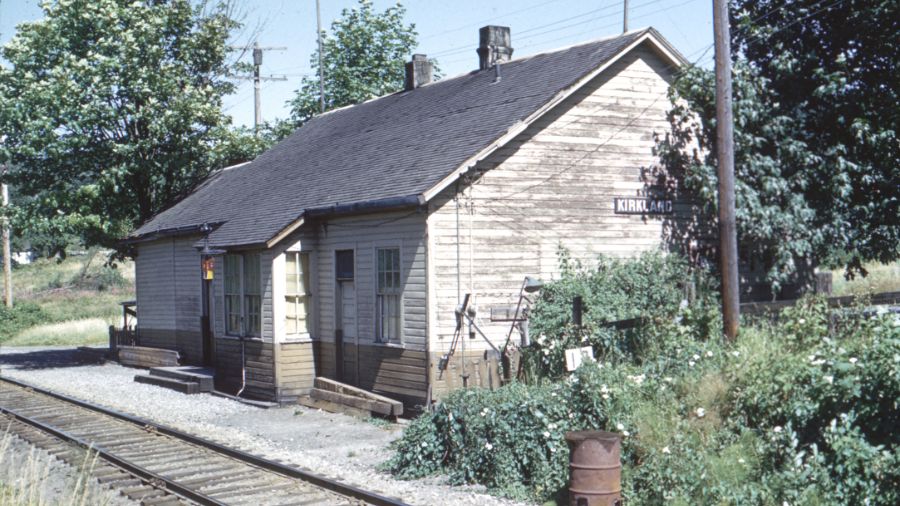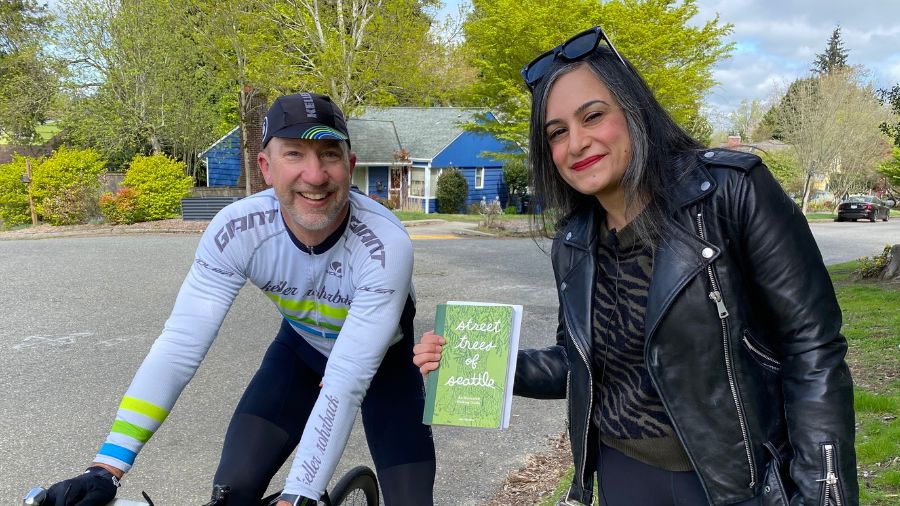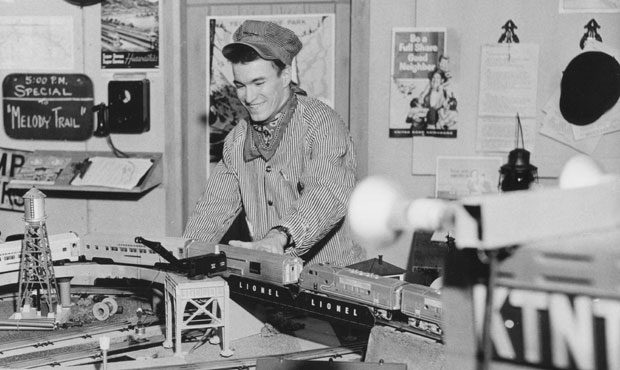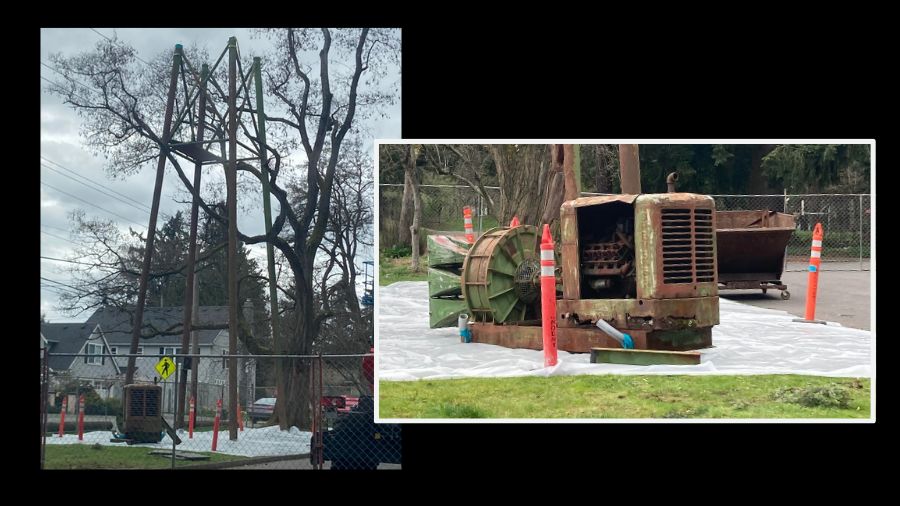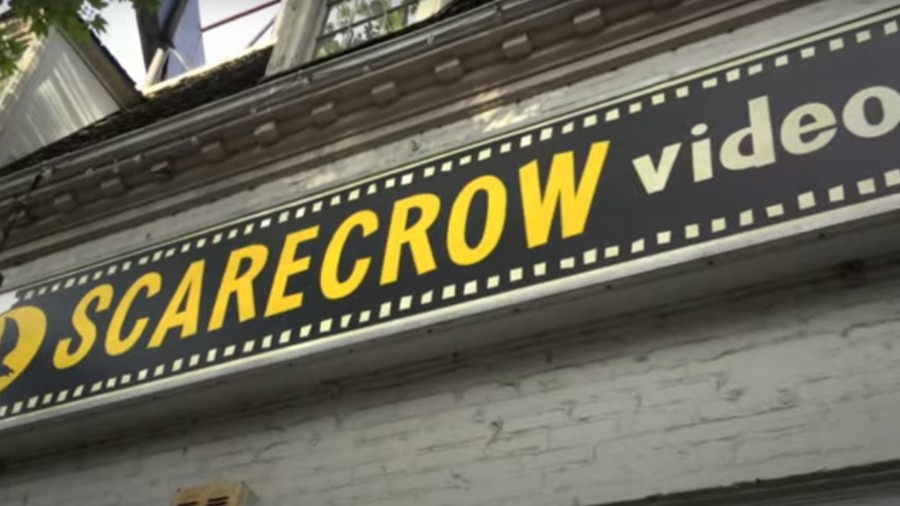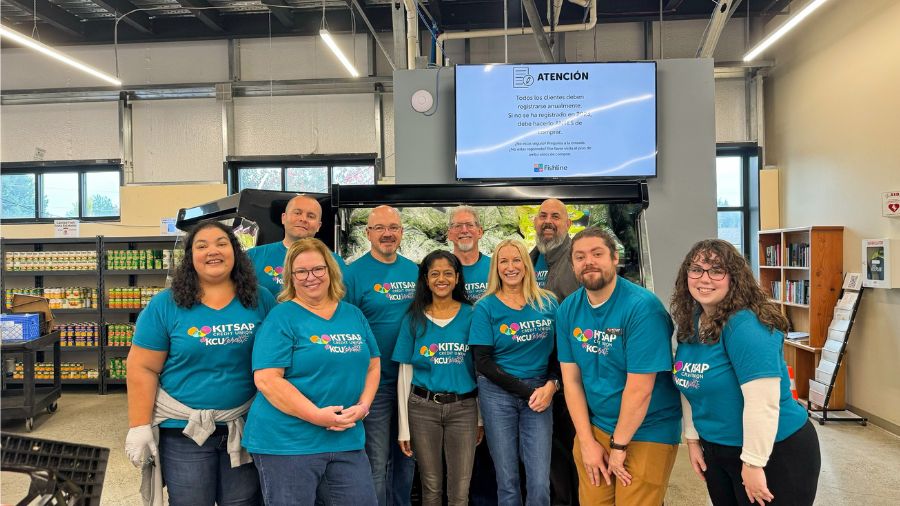Wartime history found in secret compartment on Beacon Hill
Aug 28, 2019, 6:33 AM | Updated: 9:30 am
A Beacon Hill couple recently discovered a secret compartment in the basement ceiling of their 1920s house. Hidden inside the compartment was an intriguing collection of World War II and early-Cold War documents that reveal the activities of the Seattle chapter of a mostly-forgotten national organization, as well some other more provocative political activities from that fraught era.
Seattle’s forgotten connection to radio’s Jimmie Allen Flying Club
“I was taking down a beadboard ceiling, because we have we have typical knob-and-tube wiring, galvanized plumbing, and we were replacing that,” said Jeff Maggioli, who lives in the house with his husband Josh Rohr.
“When I took the ceiling down, I was using a crowbar for most of it,” he continued, describing the kind of pre-renovation demolition that many Seattle homeowners can identify with.
“And when I got to this one section … maybe it was two feet by two feet … instead of [the beadboard] being nailed to the ceiling, I realized there were wooden pegs that were holding it up into the joists,” Maggioli said.
That got his attention, so he took a closer look.
What Jeff found in the hidden compartment was an old empty box of “Ascot” brand chocolates from New Brunswick, replete with Santa Claus design, that appears to be from the 1930s or 1940s.
But also hidden in the ceiling was a large ledger book. The book contains what appears to be hand-written membership records from roughly 1941 to 1945 for the Seattle “lodge,” or local chapter, of a national organization called the “International Workers’ Order” or IWO.
In this ledger are the first and last names and membership dues amounts for dozens of local people who were members of the Seattle lodge. The ledger also includes receipts for money orders, showing dues being regularly sent from Seattle to the IWO’s New York headquarters in Greenwich Village. There are also several letters that show the Seattle lodge was raising additional money for wartime medical relief for the Soviet Union.
The ledger entries and well-organized receipts appear to be the work of a Russian immigrant named Stella Kalyk. A check of newspaper archives reveals that Stella Kalyk actually lived a few blocks away from the house where Josh and Jeff live, and where they found the IWO materials.
The history of the IWO
James H. Williams is a retired lecturer from the University of Washington in Tacoma. He says the IWO was, essentially, a fraternal organization.
“The International Workers’ Order was a national organization of mostly fraternal lodges, largely based along ethnic lines, that sold burial insurance and provided mutual aid benefits for its members,” Williams said by phone from his home earlier this week.
Williams also says it would not have been unusual for Americans, particularly Americans of Russian descent, to raise money for Soviet relief during World War II.
“This was a perfectly normal thing, and many very prominent people across the nation joined [the IWO] and similar groups,” Williams said.
During World War II, “Russia was our ally, and certainly for much of the war, was bearing the brunt of Hitler’s offensive, and was suffering greatly. So it was nothing really out of the ordinary to support Russia with material aid and sympathy.”
Stella Kalyk, who appears to have served as the secretary of the Seattle lodge of the IWO, was born in Russia. She died in 1977 at age 85. A story about her daughter Olympiada visiting Seattle from the Soviet Union in 1975 says that Stella Kalyk came to Seattle in 1910.
Her husband Anton Kalyk, according to a Seattle Times obituary published when he died at age 80 in 1960, arrived in Seattle around the same time.
The Kalyks were fairly active in Seattle’s Russian community from the 1920s through the World War II years. For example, in 1929 when a Soviet plane flew from Sitka, Alaska Territory, and was supposed to land at Sand Point (or what’s now Magnuson Park), Olympiada was featured prominently on the front page of the Seattle Times, described as one of “several pretty Russian-born girls” waiting for the flyers to land.
During World War II, the family held at least one benefit dance in Seattle, and one fundraising picnic at a farm they owned at Bow Lake, near what’s now SeaTac – both for Soviet relief.
The same Seattle Times article about her visit in 1975 said that Olympiada Kalyk attended Franklin High School in the 1920s. It went on to say that she met a Russian merchant marine official named Venjamin Platov in 1930 when he came to Seattle to pick up a ship the Russian government had purchased from the United States.
The two married in 1932 in Shanghai, and settled together in the Soviet Union. It appears that Anton and Stella Kalyk also had a son name Mike Kalyk who passed away in 1972 at age 61.
The nuns who documented a century of Seattle history
The connection between the Kalyk family and the family who lived in what’s now Josh Rohr and Jeff Maggioli’s house is hard to pin down. The couple is eager to learn how and why the IWO papers of Stella Kalyk, who lived two blocks away, ended up hidden in their basement.
And based on what James Williams says, if the Seattle lodge of the International Workers’ Order was just a harmless fraternal organization, why hide the membership ledger in the ceiling?
The answer to this question is a little complicated.
The reason behind the secrecy
Throughout the 1940s, and especially in the years after World War II, some elements of the national IWO came to be viewed as closely associated with American Communists. This was problematic in light of the Smith Act, the 1939 federal law that made it illegal to promote overthrow of the US government, in light of the United States’ changing relationship with the Soviet Union. These and other factors ultimately contributed to the “Red Scare” and the rise of Senator Joseph McCarthy in the late 1940s and early 1950s.
“After World War II, the Soviet Union began to be seen in a different light, as an enemy whose strength grew across Eastern Europe, and people began to be concerned that they were intent on a much broader range of domination,” said James Williams. “And the victory of the Communists in China in 1949 created those same areas of concern.”
As it turns out, tucked inside Stella Kalyk’s IWO ledger were a few more additional pieces of paper, including a couple of membership cards from the local level of a national organization other than the International Workers Order. These cards didn’t belong to Stella Kalyk or Anton Kalyk; they belonged to a man who lived 75 years ago in what’s now Josh and Jeff’s house.
Sitting at his kitchen table, Josh Rohr pointed to a signature that appears on two of the membership cards that he and Jeff found in the IWO ledger – a signature that quickly got the attention of a few people who Josh had connected with in an online forum.
“Here’s a name that I think people in the Reddit thread I found were interested in,” Rohr said. “Henry Huff, one of the Seattle Seven.”
In the second and final installment next week: Who was Henry Huff and the Seattle Seven?










